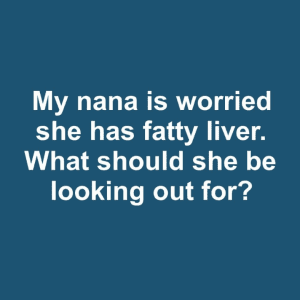In recent years, vaping has surged in popularity as a seemingly “healthier” alternative to traditional smoking. However, a recent simulation has uncovered unsettling truths about the damage that vaping can cause to your body. Despite being marketed as a safe and fruity-smelling solution, vaping carries health risks that can be just as harmful—if not worse—than smoking cigarettes.
The Mechanics of Vaping: What Really Happens When You Vape

Vaping devices may look sleek and harmless, but inside, they pack a dangerous punch. The typical vape consists of several components: a mouthpiece, a heating element, a battery, a microprocessor, and a cartridge containing e-liquid.
When you take a puff, the heating element vaporizes the liquid in the cartridge, which is then inhaled into your lungs. While this vapor may seem harmless—especially with its attractive flavors like candy or fruit—the process is alarmingly similar to smoking traditional cigarettes. The main difference? It smells and tastes better, making it more enticing, especially to younger people. But don’t be fooled—there’s more danger lurking beneath the surface.
Why Vaping is a Growing Trend Among Teens and Young Adults
Vaping has gained an enormous following among teenagers and young adults, driven by clever marketing and the social appeal of vaping devices. Unlike cigarettes, which carry a strong stigma, vapes come in colorful, sleek designs and offer a wide range of flavors that make them feel less harmful and more fun.
Statistics from 2023 reveal just how widespread vaping has become among youth. According to Truth Initiative, 4.6% of middle school students and 10% of high school students in the U.S. reported using e-cigarettes within the last 30 days, totaling more than 2 million young users.
The alarming part? Nearly 90% of these users prefer flavored e-cigarettes, like popular brands Elf Bars and GeekVape. This raises serious concerns about the potential health risks, as many young people don’t fully understand the damage they could be doing to their bodies.
The Hidden Dangers: Harmful Chemicals Lurking in Your Vape
Most vape users are unaware that they are inhaling a toxic mix of chemicals with every puff. One particularly harmful ingredient is diacetyl, a chemical used to create buttery flavors in food products. While diacetyl is safe to consume in food, inhaling it can cause severe lung damage.
A recent simulation by The Infographics Show demonstrated the alarming impact of diacetyl and other chemicals on the lungs. When inhaled, these substances can cause a buildup of mucus and damage to the alveoli—tiny air sacs in the lungs responsible for oxygen exchange.

As these chemicals take their toll, they paralyze the lung cilia, tiny hair-like structures that help clean your lungs. With the cilia out of commission, your lungs become more vulnerable to infections and life-threatening illnesses, including chronic bronchitis, COPD, and even lung cancer.
Vaping vs. Smoking: Is It Really a “Healthier” Alternative?
While vaping is often marketed as a safer alternative to smoking, recent studies suggest that it may not be the case. Both vaping and smoking introduce harmful chemicals into your body, which can have lasting consequences on your respiratory system.
Unlike smoking, where the dangers are well-known and publicized, vaping is often perceived as less harmful. But the reality is that many of the chemicals in e-cigarettes have not been fully studied, and we’re just beginning to understand their long-term effects.
For example, nicotine, a highly addictive substance, is present in most e-liquids and can contribute to addiction, increased blood pressure, and even heart disease. Additionally, because vapes can deliver higher concentrations of nicotine more quickly, they may be even more addictive than traditional cigarettes.
The Alarming Impact of Vaping on Lung Health

Perhaps the most concerning issue is the direct impact vaping has on lung health. Many vape users experience shortness of breath, chest pain, and chronic coughing. These symptoms are clear signs of damage to the lungs’ delicate tissues.
The simulation mentioned earlier also highlighted how vaping can cause a “paralytic effect” on lung cilia, rendering them unable to perform their essential cleaning function. When this happens, harmful chemicals linger in the lungs longer, increasing the risk of developing pneumonia, bronchitis, and other respiratory infections.
Moreover, vaping has been linked to popcorn lung, a rare but serious disease that causes scarring of the airways, making it difficult to breathe. This condition has been directly associated with inhaling diacetyl, one of the chemicals commonly found in vape liquids.
How to Break Free from Vaping: It’s Possible with the Right Support
If you’re currently vaping, quitting might feel like an uphill battle. Like cigarettes, vapes contain addictive substances such as nicotine, making it hard to give them up. However, the best thing you can do for your health is to stop vaping altogether.

There are several effective ways to break free from the habit. Seeking professional help, such as a counselor or joining a support group, can provide the motivation and tools needed to quit. Additionally, many people have found success using nicotine replacement therapies like patches or gum.
Another helpful tactic is replacing the habit with healthier alternatives. Exercise, meditation, or learning a new hobby can serve as positive distractions from cravings.
Although vaping may seem like a harmless and trendy alternative to smoking, the risks it poses are serious and far-reaching. The unsettling simulation showing the impact on your lungs is a wake-up call. From harmful chemicals to increased risks of severe health conditions, vaping is far from safe.
If you vape, now is the time to rethink your choices. Your health—and your future—depend on it. Remember, with the right help and determination, you can quit vaping and start breathing easier again.


